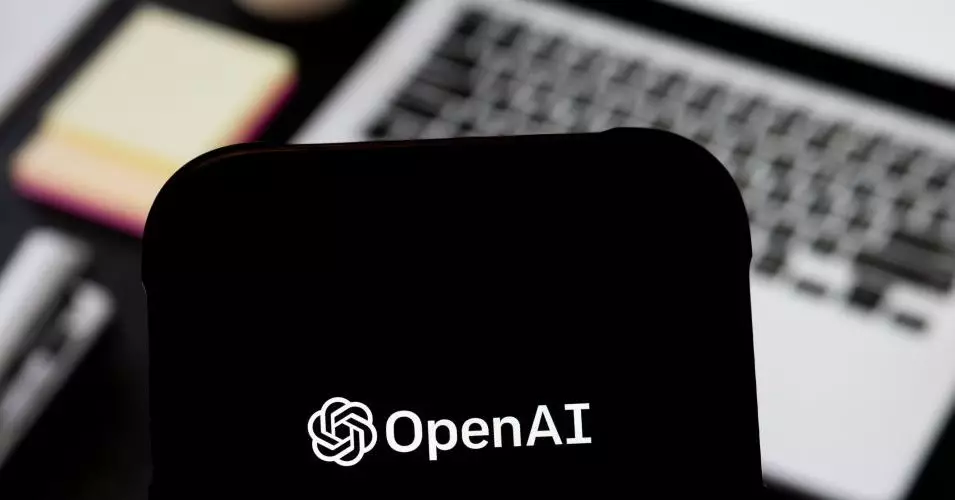In a move that promises to redefine the landscape of artificial intelligence, Sam Altman, CEO of OpenAI, has unveiled a plan for the release of a new open-weight AI model within the next few months. This announcement not only elevates OpenAI’s competitive edge but also marks a strategic pivot in the wake of rival successes from other tech giants, particularly the R1 model from DeepSeek and Meta’s Llama series. With the landscape of AI rapidly evolving, this decisive action could transform how developers and researchers engage with AI technology, fostering innovation while balancing ethical concerns.
Responding to Rivals and Industry Trends
OpenAI’s shift towards releasing open-weight models reflects a growing recognition of the competitive pressures exerted by players like DeepSeek, whose R1 model has garnered significant acclaim since its debut in January. Altman’s previous assertion that OpenAI was “on the wrong side of history” regarding open models signals a transformative realization—while proprietary models have their merits, the flexibility and accessibility afforded by open-weight structures cannot be overlooked. The impending release reaffirms the idea that operating in a profit-driven bubble risks neglecting broader societal contributions and exit routes for innovation.
Open-weight models empower developers to access, modify, and optimize AI capabilities without the barriers of exorbitant costs associated with closed systems. Altman’s earnest dialogue about the necessity of this transition hints at more than just a business strategy; it embodies a commitment to democratizing AI technology for developers worldwide. The inclusion of cheaper and flexible training protocols further signifies OpenAI’s intent to lead the innovation race, proving that powerful AI can be conceptualized without straining financial resources.
The Benefits of Open-Weight Models
The value of open-weight AI models extends beyond simply being cost-effective. Open models foster an ecosystem where sensitive applications, such as handling critical data, can thrive under rigorous customizations. With this flexibility, developers can ensure that the algorithms adhere to specific ethical standards or comply with local regulations, thus addressing the increasing demand for responsible AI usage. This could be particularly beneficial for industries like healthcare or finance, where privacy and security are paramount.
Clement Delangue, co-founder of HuggingFace, encapsulated the growing enthusiasm surrounding this model with his assertion that the rise of open models is a significant “aha moment” for many within the tech community. Indeed, the prospect of freely accessible models means that innovations can develop at an accelerated pace, harnessing collective intelligence to tackle pressing global challenges—from climate change to social justice.
Addressing Ethical Concerns
Yet, as OpenAI steps into this bold venture, challenges loom large—most notably the potential for misuse. With the openness of such models arises the specter of malicious applications, particularly in the realm of cybercrime or weapon development. AI safety is a primary focus, and OpenAI appears cognizant of the double-edged sword that an open-weight model presents. Statements from technical staff, like Steven Heidel, reaffirm an approach guided by caution, outlining the intent to create not just a powerful tool but one that possesses safeguards against exploitation.
Johannes Heidecke, an AI safety researcher at OpenAI, highlighted the company’s registration of an ethical Preparedness Framework to navigate these treacherous waters. While issues related to cyber threats cannot be dismissed, the potential for industry-wide standards and collaboration in mitigating risks could set a powerful precedent. By engaging with experts focused on AI regulation and ethics, OpenAI may be laying the groundwork for a shift toward a more responsible AI development culture.
A Call to the Innovators
As OpenAI gears up for this significant release, developers are encouraged to apply for early access—an invitation for innovation to flow through the community. Hosting events to provide hands-on experience with prototypes suggests a deliberate effort to include developers in the evolution of AI technology. The rise of collaborative communities around open-weight models could usher in a new era of AI applications, where shared discoveries propel advancements across sectors.
The swift embrace of open methodologies in AI development may be an inflection point for the industry, pushing back against a focus on exclusivity that has characterized many tech giants. With OpenAI taking a stand, one can only hope that the balance between accessibility and safety will drive a thoughtful reshaping of AI technology, ultimately enhancing its capacity to serve humanity holistically.

